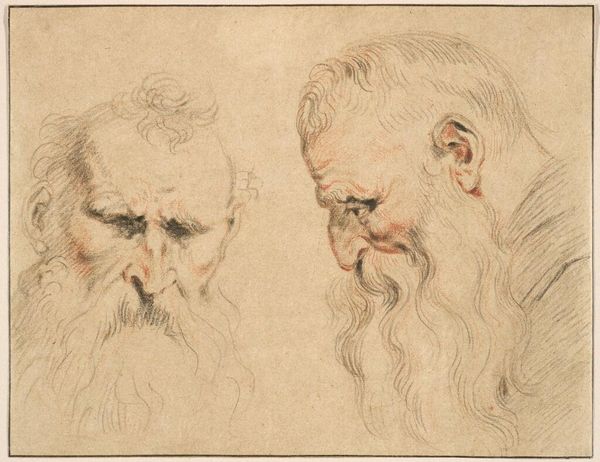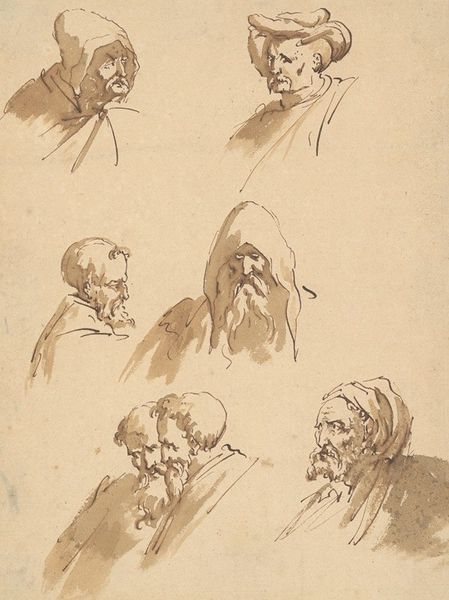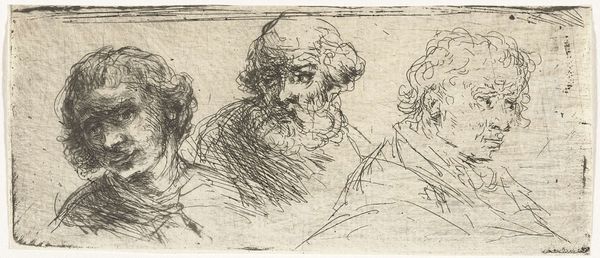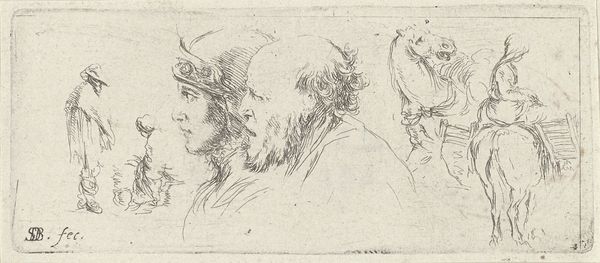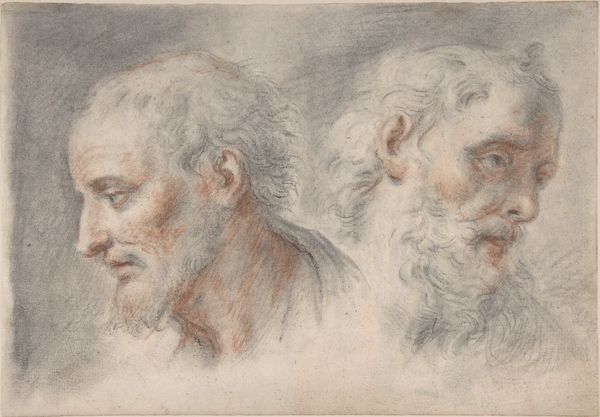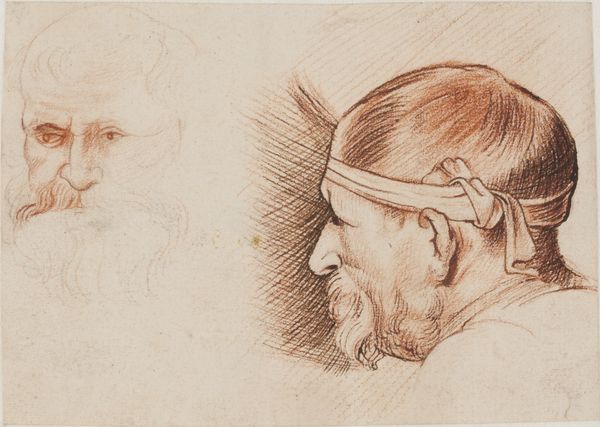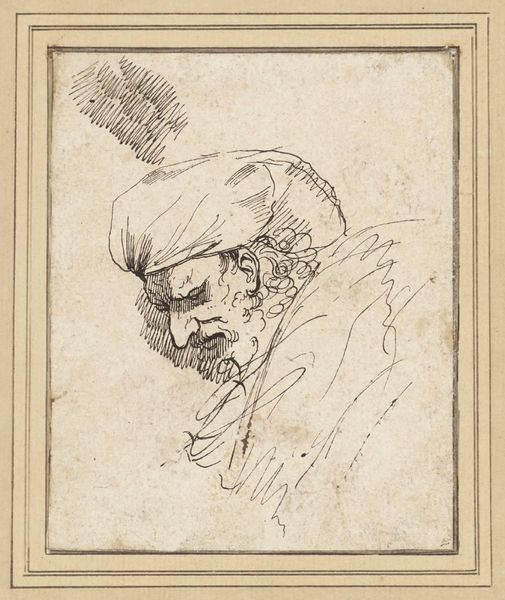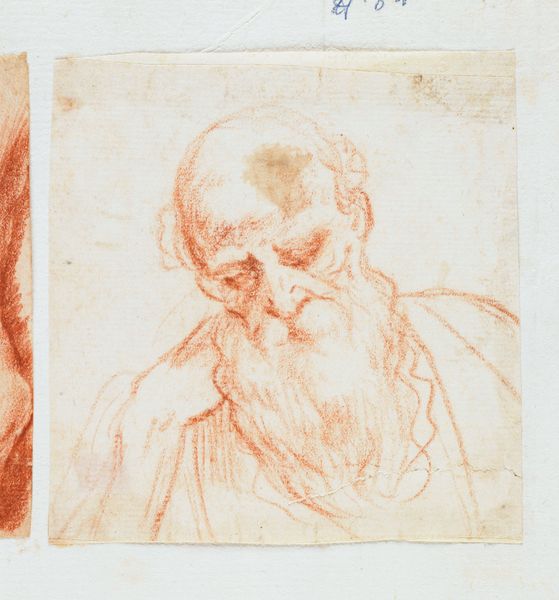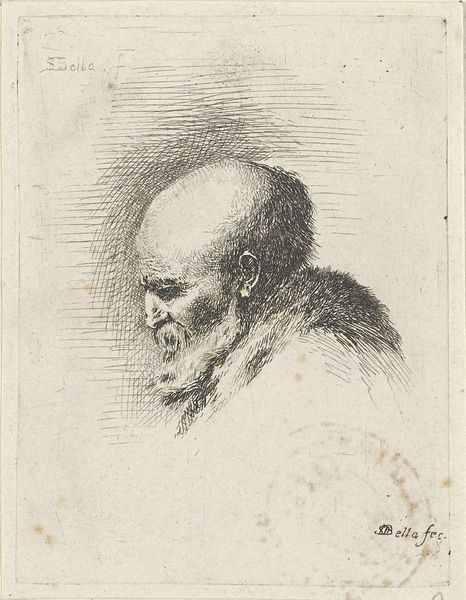
drawing, ink
#
portrait
#
drawing
#
baroque
#
dutch-golden-age
#
ink
#
portrait drawing
Copyright: Public domain
Editor: Here we have Rembrandt's "Two Studies of the Head of an Old Man," from 1626, created with ink. The scratchy lines create such expressive, somber faces. What do you see in this piece? Curator: For me, it’s all about process. Consider the paper, likely rag-based, a precious commodity back then. The very act of making, the artist choosing relatively cheap materials for study versus finished product. It suggests a democratisation of art making, where sketching and observation weren't exclusive to creating grand, commissioned works. Editor: That’s a really interesting point. I never considered the socio-economic implications of using cheaper materials. Curator: Exactly! The material limitations shaped the final aesthetic. He is exploring how line and form communicate in this medium. How accessible was ink to Rembrandt compared to oil paints, and how does that relate to Rembrandt's studio structure and the work produced within that system? Editor: So, by looking at something as simple as the materials, we gain insight into the artist's working methods and the broader economic conditions of the time. Were these studies intended for wider circulation, or was this simply for Rembrandt himself? Curator: That's the key question, isn't it? Its very existence poses a challenge to the high/low art dichotomy. Was Rembrandt challenging that, or accepting the parameters of his environment? Editor: Thinking about the material constraints makes me consider art as a product of very tangible forces, it feels far removed from notions of pure genius. Thank you. Curator: It makes you appreciate the choices that an artist makes, informed by practical conditions that existed. A fascinating shift in perspective.
Comments
No comments
Be the first to comment and join the conversation on the ultimate creative platform.
